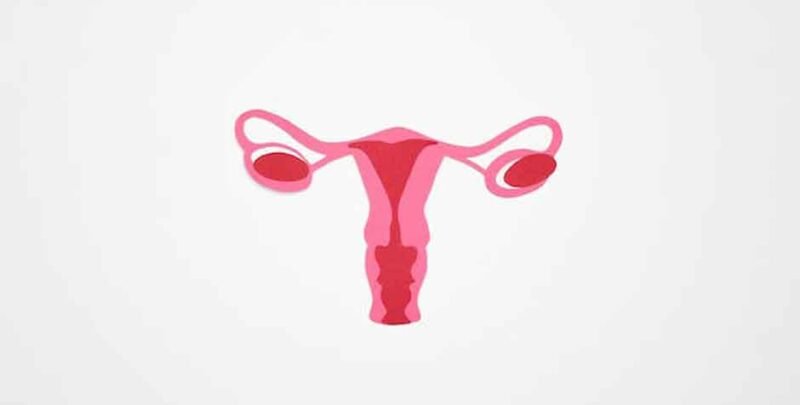
Frequently occurring noncancerous growths in the uterus are called uterine fibroids. Understanding the origins and symptoms is crucial for early detection and efficient treatment. Explore the key factors contributing to uterine fibroids and the associated signs you should be aware of.
1. Hormonal Fluctuations:
The growth of uterine fibroids is significantly influenced by hormonal oscillations, particularly high levels of progesterone and estrogen. These hormones, crucial for regulating the menstrual cycle and supporting fertility, can inadvertently contribute to the growth of fibroid tissue in the uterus. Estrogen has been identified as a key factor in fueling the development and maintenance of uterine fibroids. When a person is fertile, their natural estrogen levels are greater, which raises the risk of fibroid growth. Another hormone connected to the menstrual cycle, progesterone, may potentially have an impact on the formation of fibroid tumors. The intricate interplay between these hormones can create an environment conducive to the initiation and progression of uterine fibroids, emphasizing the hormonal component as a significant factor in their pathogenesis. Understanding these hormonal dynamics is crucial for developing targeted approaches to manage and address uterine fibroids effectively.
2. Genetic Predisposition:
Genetic predisposition emerges as a notable factor influencing the likelihood of developing uterine fibroids. The presence of a family history, particularly if close relatives such as a mother or sister have a documented history of fibroids, can significantly elevate an individual’s risk. While the exact genetic mechanisms underlying fibroid development are complex and multifaceted, there is clear evidence that genetic factors contribute to the susceptibility to these noncancerous growths. Certain genetic variants and indicators have been shown by researchers to be linked to an increased incidence of fibroids. Understanding the familial component of fibroid development sheds light on the hereditary nature of this condition. People who have a family history of reproductive disorders should be more watchful of their reproductive health and think about taking preventative or early intervention steps based on individual risk assessments. This genetic insight is valuable for both individuals and healthcare providers in developing targeted strategies for fibroid prevention and management.
3. Age and Reproductive Factors:
The occurrence of uterine fibroids is closely tied to age and various reproductive factors. Typically, these noncancerous growths manifest during a woman’s reproductive years, with the risk reaching its zenith in the 30s and 40s. Hormonal fluctuations during this period, especially elevated levels of estrogen and progesterone, create an environment conducive to fibroid development. Menarche, the term for the early start of menstruation, has been suggested as a possible contributing factor. Younger women who go through their first menstrual cycle may be more vulnerable to fibroids. Additionally, nulliparity, or the condition of never having given birth, is associated with an increased risk. The complex interplay of reproductive factors, hormonal dynamics, and age underscores the multifaceted nature of uterine fibroid development. Recognizing these factors is pivotal in comprehending the nuances of fibroid prevalence and guiding healthcare strategies tailored to different life stages. It also emphasizes the importance of reproductive health discussions and proactive measures for women in their reproductive years.
4. Ethnicity and Lifestyle:
The prevalence of uterine fibroids is influenced by a complex interplay of factors, including ethnicity and lifestyle choices. Studies consistently show a higher risk of uterine fibroids among African-American women, indicating an ethnic disparity that underscores the need for targeted healthcare approaches. Additionally, lifestyle factors such as obesity contribute to an increased risk, with higher body mass indexes being associated with a greater likelihood of fibroid development. Additionally, dietary practices are important; a diet heavy in red meat has been associated with a higher incidence of fibroids. Recognizing these ethnic and lifestyle dimensions is essential for personalized risk assessments and interventions, enabling healthcare professionals to offer tailored guidance to individuals at higher risk of developing uterine fibroid.
5. Symptoms to Watch For:
Recognizing the symptoms associated with uterine fibroids is paramount for early detection and effective uterine fibroid treatment. Backache, pelvic discomfort or pressure, heavy menstrual flow, and frequent urination are common warning signs. Women experiencing these symptoms, especially those residing in Memphis, TN, should prioritize seeking medical attention for a comprehensive evaluation and discussion of available treatment options. Early detection allows for timely interventions, and understanding the signs of uterine fibroids empowers individuals to take proactive steps toward managing their reproductive health. If you or someone you know is experiencing these symptoms, consulting with healthcare professionals specializing in uterine fibroid treatment in Memphis, TN, is a crucial step in addressing these concerns and ensuring personalized care.
Conclusion:
Being informed about the causes and symptoms of uterine fibroids empowers individuals to make proactive health decisions. For a thorough assessment, speak with a medical expert if your symptoms are bothersome. Prioritizing awareness and consulting with a medical expert for a thorough assessment of bothersome symptoms ensures individuals are empowered to make informed decisions about managing uterine fibroids and maintaining their reproductive health.

